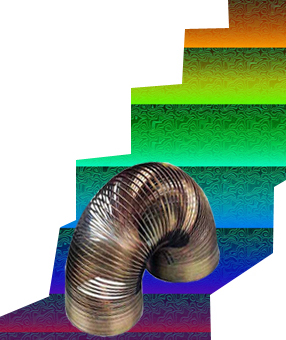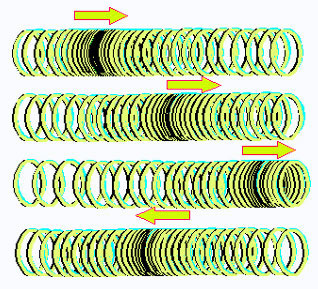How can a slinky walk down the staircase ?

Slinky is made up of many springy coils. If you compress a slinky and release, you will be able to see compression - stretching wave propagate backwards and forwards throughout the length of the slinky. The backward - forward motion is a simple harmonic motion; it is a result of the energy of your action.
Now place this slinky, which is already in simple harmonic motion, on top of a staircase. What do you observe? The slinky starts walking down the stairs!
The slinky is able to do this on account of conservation of potential and kinetic energy. As the wave does a forward - backward motion, on one side there is a surface, and on the other side there is no surface. When the wave comes backwards, it overshoots and makes the slinky go down one step. Then the wave goes forward, pushes against the surface. The wave gets some more push or kinetic energy from the step's surface. The wave goes backwards, overshoots, and the slinky takes another step down. And so on so forth. The overshoot is due to the way slinky rings are made.
If there is no dissipation of energy due to friction, change in the slinky's elastic potential energy, dissipation of sound energy as ruffling noise, the slinky will go on walking down the staircase for a long time and it is fun to watch.
